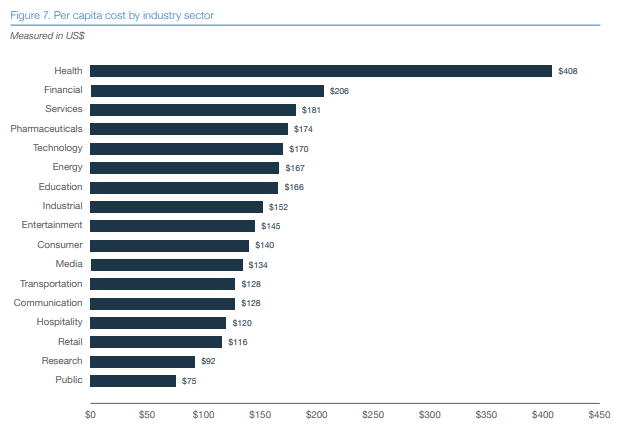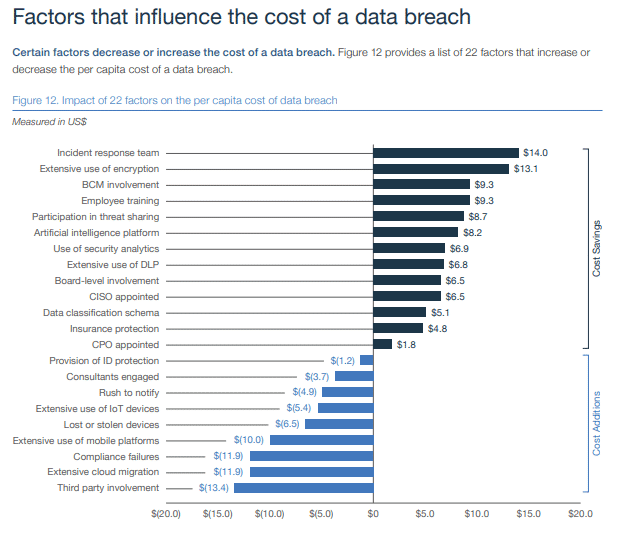 According to the HHS, data breaches in the U.S. Healthcare System totaled $6.2 billion in 2016 and 4 out of 5 physicians have experienced a cyberattack. ¹ As seen in figure 7 above, the 2018 cost per patient record in a data breach is significantly higher for the healthcare industry than any other major industry clocking in at $408 per record.³
According to the HHS, data breaches in the U.S. Healthcare System totaled $6.2 billion in 2016 and 4 out of 5 physicians have experienced a cyberattack. ¹ As seen in figure 7 above, the 2018 cost per patient record in a data breach is significantly higher for the healthcare industry than any other major industry clocking in at $408 per record.³
 There are many steps you can take to be proactive in cybersecurity. Figure 12 above demonstrates what factors save you money per capita by implementing versus what lack of security measures add to the cost you pay when you get breached.³ Tactics like training your employees to spot red flags and teaching them cybersecurity best practices help to lessen the blow should a breach occur. The HIPAA Journal also released some best practices for healthcare cybersecurity including:²
There are many steps you can take to be proactive in cybersecurity. Figure 12 above demonstrates what factors save you money per capita by implementing versus what lack of security measures add to the cost you pay when you get breached.³ Tactics like training your employees to spot red flags and teaching them cybersecurity best practices help to lessen the blow should a breach occur. The HIPAA Journal also released some best practices for healthcare cybersecurity including:²
- Data protection and loss prevention
- Email protection systems
- Network management
- Medical device security
- Cybersecurity policies
- Endpoint protection systems
- Asset management

Information Technology Aligned With Your Business Goals?
Baroan is a complete IT services & IT support company working with organizations in Elmwood Park and across the United States of America.
When it comes to IT services and solutions, you need someone who not only comprehends the IT industry but is also passionate about helping clients achieve long-term growth using proven IT solutions. Guy, in leading our company, is committed to helping clients improve their technology in order to develop a competitive edge in their industries.
At Baroan Technologies, Guy Baroan leads a team of dedicated professionals who are committed to delivering exceptional IT services and solutions. With his extensive expertise and hands-on experience, Guy ensures that clients receive the utmost support and guidance in their IT endeavors. Trust in Baroan Technologies to elevate your business systems and stay ahead in today’s competitive landscape.



